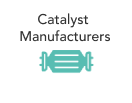By Professor Roy Douglas, CTO and Co-Founder CATAGEN
There is a growing perception online and in media reports that battery electric vehicles (BEVs) are the only solution for decarbonisation to tackle the impending climate crisis. As with many things in life, BEVs are only part of the solution and the real picture is much more nuanced and varies significantly between transport sectors. Undoubtedly, BEVs and Hydrogen Fuel-Cell EVs (FCEVs) have a huge part to play in reducing the carbon emissions from vehicles but cleaner, greener fuels also have a large part to play and should not be dismissed. Indeed this is well recognised in the UK government’s recent strategy document, “Decarbonising UK Transport”, where roadmaps are presented for all of the different transport sectors and where alternative fuels feature heavily. So a blended approach, using all forms of low-carbon energy, offers the best approach with alternative liquid fuels having a significant contribution.
For cars, the future is clearly BEV with the main transition occurring between 2030 and 2040.
However, the road to transforming the vehicle fleets will be slower and more problematic than currently expected so expect to see hybrid cars on our roads until 2050. The BEV technology is now well developed and most car companies have a good quality product on offer but the practical and social challenges still remain.
Practically, the main issues are charging infrastructure and electrical grid capacity. Socially, there are the challenges of public acceptability: cost, range, useful life and affordability. Families on lower income, who purchase an older, low-cost car and run it until it expires, see little chance of affording a BEV in the near future. This is where alternative low-carbon liquid fuels can have an huge impact and act as an interim solution, extending the life of hybrid cars while BEVs become more widely used and accepted.
For buses, the transfer to BEVs has already started and trials of FCEVs are underway. The strategy for buses is evolving such that BEV and FCEV will be used in cities and the choice will be dependent on operational influences such as route, passenger number and range. Diesel buses will remain the preference for rural routes with drop-in biofuels gradually replacing fossil fuels. Ultimately, as the hydrogen economy develops, hydrogen FCEV and hydrogen combustion hybrid electric vehicles (HHEV) will replace diesel engine buses by about 2040.
For heavy-duty road haulage, BEVs are unlikely to make much impact with FCEVs looking like the more appropriate longer term solution. However, cost and availability will limit the introduction and combustion engine power will remain the mainstream for many years. In the near term, biofuels will replace fossil fuels with the changeover limited by availability of fuel. Good quality biodiesel is available now, with other fuels such as HVO (hydrogenated vegetable oil) gaining some traction. In the next few years to 2030, biofuels and efuels (synthetic diesel) will gradually replace fossil diesel with the hydrogen economy impacting strongly by 2040.
For other forms of transport, such as aviation and marine, the picture is not quite so clear and changes will be further into the future. Whilst there will be some uptake of battery and hydrogen power, combustion engines using liquid fuels will be the main power-plants for the foreseeable future. Alternative fuels offers the main route to decarbonisation in these sectors and, currently, there is no realistic alternative for larger shipping and for long-haul aircraft.
In conclusion, cleaner greener liquid fuels offer the potential of large impact on decarbonisation of road transport in the near term before battery electric and the hydrogen economy can gain significant traction. For aviation and marine, these fuels are the only practical alternative to reduce carbon emissions.
Bio – Professor Roy Douglas
Roy is Chief Technical Officer, a Director and one of the founders of Catagen Ltd. He is Professor Emeritus of IC Engines Technology in the School of Mechanical and Aerospace Engineering at Queen’s University, Belfast. He has over 40 years of experience in the areas of engine research and development, systems modelling and automotive after-treatment. For the past 25 years, his research has concentrated on improving the performance of automotive after-treatment systems, with particular emphasis on applied catalysis at the interface between chemistry and engineering. He is keenly interested in improved air quality through application of ultra-low emissions technology on the roadmap to zero tailpipe emissions for the automotive industry.
He has published over 100 technical papers with 4 granted patents: he has supervised over 40 PhD research students and over 20 Post-doctoral research fellows; he has research earnings of over £25 million.
He was a senior member of the School of Mechanical & Aerospace Engineering and a member of the school management team. He is currently a member of the Automotive Council Technical Committee in the UK and a member of the International Advisory Board for the Virtual Vehicle Research Centre at TU Graz, Austria.
CATAGEN has worked with a number of companies to help them understand the impact of additives in fuel to understand catalyst performance using its patented technology. To find out more, contact info@catagen.com
More Content:











